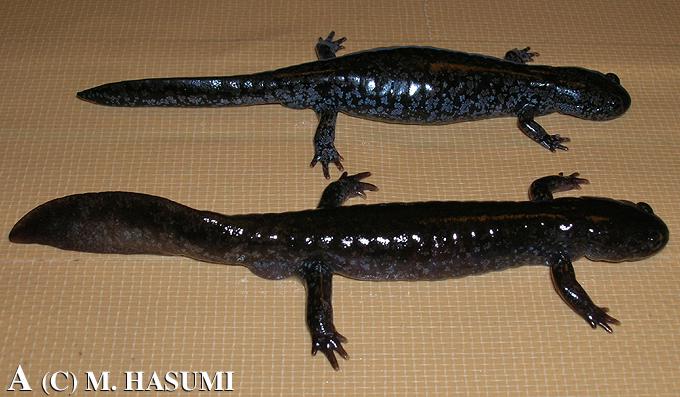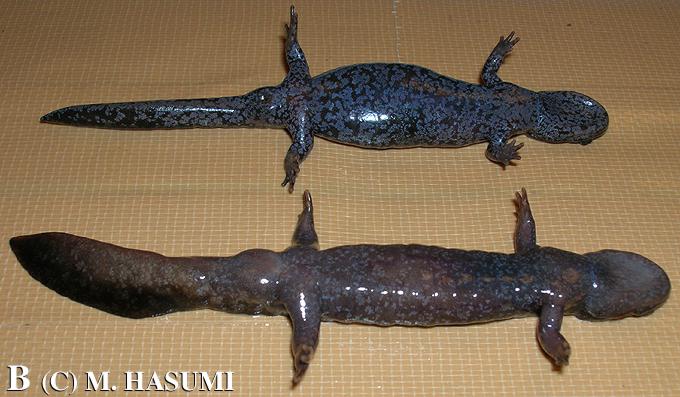

 |
 |
(A) Dorsal view of the male (front) and female (back). Each sex usually possessed four toes in both hindlimbs. Note a fin that was developed in a broken and regenerated tail of the male, and the absence of a tail-fin in the female.
(B) Ventral view of the male (front) and female (back). A white pigmented patch in the throat region was characteristic of aquatic-phase males during the April-May breeding season. For comparison, this white patch was discernible during the terrestrial phase of the September-October nonbreeding season in the salamander Salamandrella keyserlingii (Hasumi, 2001). The seminal fluid was partially out of the male's cloacal opening when his abdomen was pushed by hand. Beige-colored ovisacs were not distinguished through the skin of the ventral side of the torso near the hindlimbs of the female, perhaps because of the completion of the formation of egg sacs in the ovisacs. Note the swelling of the male's cloacal region and the female's cloacal opening that was changing from a slit into a hole.
Measurements of body size in each sex were conducted after anesthetized in a saturated solution of p-aminobenzoic acid ethyl ester: male (body mass = 5.3 g, broadest head width = 11.2 mm, maximum tail height = 8.5 mm, snout-anterior vent length = 56.1 mm, snout-posterior vent length = 61.3 mm, tail length = 36.1 mm) and female (body mass = 5.0 g, broadest head width = 9.6 mm, maximum tail height = 5.8 mm, snout-anterior vent length = 55.4 mm, snout-posterior vent length = 59.3 mm, tail length = 33.1 mm).
Accompanied Research Collaborators (alphabetical order): Masaichi Kakegawa (Tokyo Metropolitan Komatsugawa Senior High School) and Fujio Kishi (Shirouma Association of Naturalists).